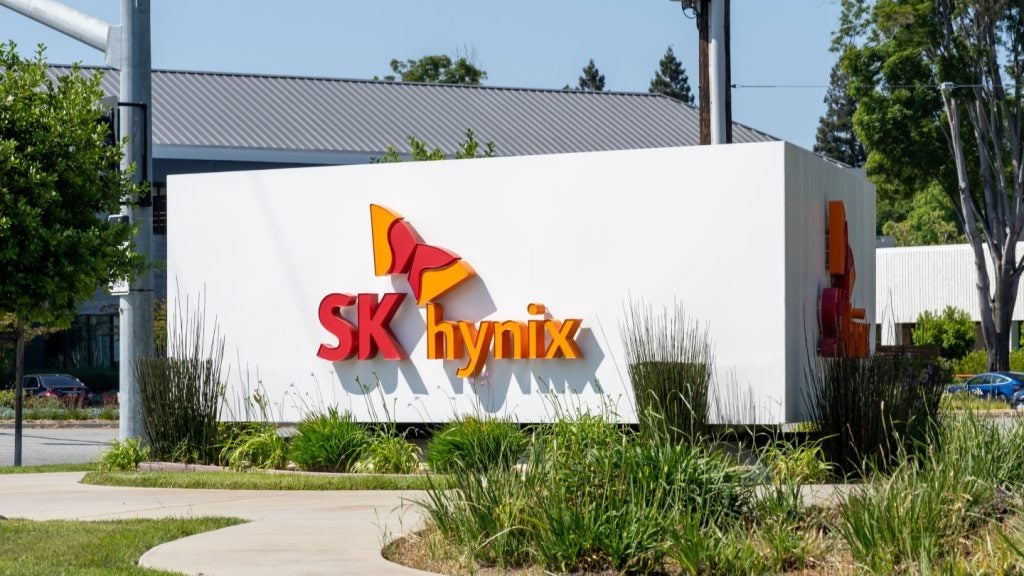
Heatwaves invoke dystopian imagery of people crawling into the safety of air-conditioned homes while wildfires miles away pelt their roofs with ash falling from the sky like rain. They solicit visions of news anchors reporting on how the scorching sun bends rail tracks out of shape and, throughout all of it, the death toll keeps rising.
Brits no longer need to imagine any of this. Not after this week. When the mercury hit above 40°C in the UK on July 19, making it the country’s hottest day on record, Brits got a taste of how bad things can and will get.
So, obviously, people are now looking for solutions. Given the UK’s reputation as an innovative hotbed, pundits naturally turn to tech wonks, asking them what technology can do to protect cities from another heatwave.
It is a pertinent question. The danger of rising temperatures is a matter of life and death. The heatwave this week has already killed 1,500 people across Europe. Those figures will likely rise as more data comes in and, morbidly, more bodies are found.
And it could be much, much worse. City-dwellers in European metropolises have already learned that solemn fact.
During a six-week heatwave in Paris in 2003, over 15,000 people died from heat stroke, heat exhaustion and dehydration. Of those, 3,000 people died on the same day, on what the Parisians now refer to as the Black Monday. The total death toll exceeded 70,000 across Europe.
How well do you really know your competitors?
Access the most comprehensive Company Profiles on the market, powered by GlobalData. Save hours of research. Gain competitive edge.

Thank you!
Your download email will arrive shortly
Not ready to buy yet? Download a free sample
We are confident about the unique quality of our Company Profiles. However, we want you to make the most beneficial decision for your business, so we offer a free sample that you can download by submitting the below form
By GlobalData“Absolute hell”
City dwellers are particularly vulnerable to future heatwaves. This is due to how cities are built. Urbanised areas’ infrastructure absorbs heat and reflects sunshine, causing them to experience higher temperatures than outlying areas. This phenomena is often referred to as “urban heat islands”.
The consequences of this were on display this week. For starters, the Big Smoke was literally on fire. London firefighters suffered an “unprecedented day in the history of the London Fire Brigade”, stretching the department’s resources thin. A firefighter in Wennington described the conditions as “absolute hell” to the BBC.
Elsewhere, the sweltering heat warped train rails at Vauxhall. In an effort to curb the risk of further damage, Network Rail engineers painted the tracks white to prevent them from getting hotter and bending even more out of shape.
Data centres were reduced to spraying roof-mounted air-conditioning units with water to keep cool. Some data centres run by Google and Oracle suffered service outages, citing issues with their cooling systems.
And this is only the beginning. By 2018, over 350 cities could expect summer temperature highs of over 35°C, but that number could rise to around 970 cities by 2050, according to C40, a network of nearly 100 city mayors.
“Summertime is quickly becoming a deadly season for life on Earth,” Jonathon H. Stillman, professor of biology at San Francisco State University, warned in a 2019 article in the science journal Physiology.
“We may pleasantly recall summer as that time of the year for relaxed enjoyment of the sun’s comfortable warmth during long and restful days. However, due to global warming, summer temperatures now, and increasingly into the future, are frequently too hot for comfort.”
News outlets offered tips on how people could protect themselves from the heat. These tips ranged from taking luke-warm baths to creating their own fans.
Well-meaning as these missives may be, they don’t provide a long-term solution for how communities can combat the next blaze.
Instead, people now turn to technology, hoping innovative gadgets can help protect cities from the next heatwave. They are right in doing so. However, don’t expect them to solve things anytime soon.
Can technology help cities fight the next heatwave?
There is no shortage of technology solutions that claim to help customers beat the heat. From temperature-controlled mattress toppers to tables that cool the surrounding room, businesses have jumped on the opportunity to flog home-improvement solutions for overheating city dwellers.
Others point to how artificial intelligence (AI) can regulate air-conditioning to keep city-dwellers cool, comfortable and content throughout the next blaze. Those solutions may provide momentary relief, but fail to provide any long-term solutions to these issues.
“In terms of environmental sustainability, there’s hardly any [benefits to these solutions],” Chantel Scheepers, CEO of OakTree Power, tells Verdict.
In fact, they could actively make things worse. The Sveriges Radio documentary Den Kommande Hettan points to places like Qatar and Dubai where city denizens have made a habit out of cranking up the air-condition whenever the mercury rises. It does rise above 40°C on an almost daily basis in the summer in those cities.
In response, city planners have gone to remarkable lengths to keep the heat at bay. Qatar has even started to air-condition the outside.
“These are ‘oh shit’ moments”
So what’s the problem? The problem is that these solutions exacerbate the onslaught of global warming. The more you cool down your home, the hotter the planet gets.
“Tackling urban heat by cranking up the AC is kind of like repaying a debt by borrowing more – in the long run, it just doesn’t work,” Rory Gopsill, associate analyst at research firm GlobalData, tells Verdict.
Air-conditioning units are extremely power-hungry. A small unit cooling a single room consume roughly as much electricity as four fridges. Given how popular it has become to plug in a unit when the mercury rises, it’s unsurprising that the voltage required will shoot up too.
As an example, researchers estimate that 50% of all energy capacity in Beijing went to power air-conditioning during a 2018 heatwave.
With majority of grids being powered by non-renewable sources of electricity, that means that these cooling units actively contribute to global warming.
“These are ‘oh shit’ moments,” John Dulac, an analyst at the International Energy Agency (IEA), told The Guardian in a 2019 article.
A question of class privilege
Air-conditioning units have another downside: they are expensive. Most people can’t afford to spend hundreds of pounds to buy nifty new cooling systems during normal times. They are even more unlikely to be able to afford them during the current cost-of-living crisis.
As the BBC reported, most of the people who perished in Paris in 2003 were already vulnerable, elderly or sickly, underscoring how the heat in many ways is a question of what social strata you inhabit.
The question of global warming is rife with class privilege. Affluent globetrotters have no qualms about ramping up the air-conditioning, clinking ice into glasses of Evian, insulate better, or simply move somewhere else where they won’t have to deal with the heat. Beating the heat is easy if you can afford it.
And most people can’t. People living in more deprived areas are likely to scoff as rich kids flaunt their green lifestyles on social media, seeing them for the fatuous attempts of egotistic peacocking that they are. That is, if they aren’t too busy failing to stay hydrated as the mercury keeps rising.
That being said, people won’t stop using air-conditioning units anytime soon. It’s just too easy, too useful.
“Whatever our environmentally conscious preferences might be, the simple fact is that ACU is going to triple by 2050, according to the IEA,” Gopsill says.
That would mean that cooling units alone would use as much power as China and India do today.
Unfortunately, cranking up the air-conditioning remains the most efficient and most convenient way to keep cool during heatwaves.
“Air conditioning does play an important role, because it does save lives,” Gopsill says.
Technology solutions that can help cities during the next heatwave
Installing more air-condition clearly isn’t the answer. However, it can provide a starting point to explain how technology could help fight off the next heatwave.
Extreme temperatures have ramped up energy usage to record heights. That could make exposed power lines highly conductive, meaning they could easily cause wildfires if, for example, a branch fell on them.
Equally serious is the risk of surging power usage causing blackouts and outages. In places shackled with ageing power grids, that danger has already become a reality. This week almost 8,000 properties across England lost power as conductors sagged and transformers overheated. These outages could have catastrophic consequences.
“If we didn’t have [air-condition] during heatwaves, people would die,” Gopsill says. “So as imperfect a solution as it is, how can we ensure that people have access to air conditioning units that work during periods of intense heat?”
Here’s one way technology could help during the next heatwave: it could help modernise old power grids and transforms them into smart grids.
“‘Smart Grid’ is it a big term that refers to a number of different technologies, but the area smart grids in particular that are worth investing in to help during heatwaves are micro grids and distributed power generators,” Gopsill says.
The term micro grid refers to a variety of technologies that can provide electricity at or near the point of energy consumption. That could, for instance, be renewable sources like solar energy or batteries. Each micro grid would only serve a small local system, such as ones powering campuses or municipalities.
“The reason that micro grids can be useful [in] ensuring or improving energy resilience during a heatwave is because they’re independent of the central grid,” Gopsill says, explaining that they can take some of the strain of the central power grid, reducing the number of air-conditioning units the central grid must power.
Redesigning the cities of the future
Smart grids are but one part of the puzzle. Another can be sourced from the increasingly louder choir of experts who openly advocates for a complete overhaul of the way city planners think.
“[We] need to redesign our cities beyond energy efficiency and cutting carbon emissions,” Eleni Myrivili, chief heat officer of the city of Athens, said during a TED talk in April. “We need an urban design revolution, a total paradigm [shift.]”
She envisioned a time when when architects were no longer leading the development of cities. Instead, Myrivili called for “landscape architects that know more about thermodynamics and soil” to take the lead.
She envisioned a city that swapped its building blocks for more sustainable materials and that introduced more biodiversity in the form of trees and water to “bring down the heat.”
That provides technology with another opportunity to help cities beat the next heatwave. As city planners look to overhaul cityscapes across the globe, they need tools to do so. Tech developers offer several such tools.
Chief among them are so-called digital twins. Digital twins are real-time representations of physical assets, systems or processes that can be built using AI, machine-learning, satellites, mixed-reality or a combination of these technologies. Or to put it this way, digital twins are virtual copies of real-life things like factories, buildings and even the Earth.
Digital twins are already being used by the power industry to help forecast and calculate the risk of wildfires, enabling the industry to prevent them from becoming roaring blazes.
“Digital twins could also help us to fight heatwaves by analysing the effects of increased temperatures on housing, wireless networks antennas, solar panels and public transport,” Tom Winstanley, CTO and head of new ventures at technology consultancy NTT DATA UK, tells Verdict.
Urban planners already use digital twins to access untapped opportunities. The London borough of Harrow is one example of a community that’s doing so. By using a string of connected sensors, the borough can improve its planning and monitor the real-life development of street works. Lisbon, Shanghai and Helsinki are three other examples of cities using the technology.
In Wellington the city is using smart city technology to beef up its green chops.
“[Wellington] uses a digital twin city-wide that use IoT sensors and publicly sourced information to measure the greenhouse gas emissions released by various urban transport medium,” Gopsill says.
Big data to beat the heat
Digital twins could provide cities with the data needed to sound off warnings before the next heatwave strikes or do things like redirect energy consumption. It could also provide urban planners with the tools to build more resilient buildings, better equipped to counteract the heat and reduce the effects of urban heat islands.
More importantly, once these data sets are made public, they could pressure real estate owners to take action. If they fail to acknowledge the risk heatwaves, flooding and other natural phenomena expose on their assets, then the consequences could be expensive.
“Over time, once you don’t get your insurance, and you don’t get the credit to build or to grow your business or to buy your home [you must change],” Iggy Bassi, CEO and founder of climate intelligence company Cervest, tells Verdict. “It will happen.”
In the short run, smart city technology can also help cities better protect their citizens from heatwaves by issuing warnings.
“With climate and social phenomena like heatwaves, the more we know about it the better we can handle it,” Duncan Grierson, CEO and founder of climate-focused investing app Clim8, tells Verdict. “The Internet of things can allow us to both track temperature and pollution levels, and connect to people through apps that track health and wellbeing to understand how people are being affected by the heat.”
This could, for instance, be combined with telemedicine services like the ones health authorities in Rome have rolled out to protect against heat-related illnesses.
Climate change is the real villain
In the end, however, all of these gadgets, gizmos, services, solutions and innovations won’t fix the underlining issue: climate change. At best, they are akin to putting a band-aid on a tumour. The ball, as they say, is in the politicians’ corner.
“The UK government needs to do more for net zero,” Grierson says. “But there is also a massive opportunity to build new green jobs to tackle the climate emergency. Extreme weather events have been sweeping the globe at breakneck speed and we look forward to seeing how the UK government revises [its]net zero plan after the High Court ruled the current strategy unlawful just this week.”
Even if the UK government would actively pursue a greener agenda – which seems unlikely given the candidates to replace Boris Johnson as prime minister have either seemingly argued for rolling back its goals or mostly ignored the topic – then politicians in other countries would still have to be convinced. That seems unlikely to happen.
Lawmakers and regulators aren’t the only ones that must step up to bat: businesses also have a role to play.
“Today, we have a pressing need to reach net zero emissions,” Scheepers says. “And that objective needs to be taken incredibly seriously by UK companies if we want to avoid another heatwave and halt climate change.”
Even if, by some miracle, the governments and companies and citizens of the world would unite and say “no more”, then we would still have to deal with extreme weather conditions. The wounds already inflicted by climate change will take time to heal.
“You could hit net zero tomorrow morning, globally. And you’ll still have what we saw in London for the next five, six decades,” Bassi says.
Technology can only provide a limited relief during weather disasters that hit the cities of the world.
“Unfortunately, technologies at a small scale are going to struggle to cope with severe heat, but cities can integrate the risks now and create a plan for how to cope with extreme weather, whether that be flooding, storms or heatwaves,” Grierson says.
It is in that preventive work that technology can help cities when the next heatwave comes, which sadly will be sooner than what London is prepared for today.
GlobalData is the parent company of Verdict and its sister publications.







